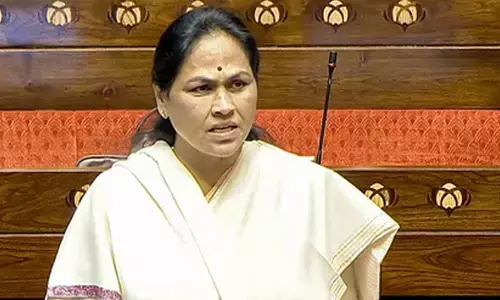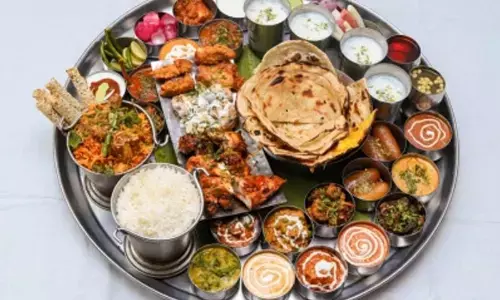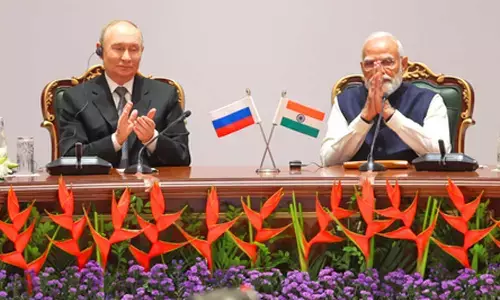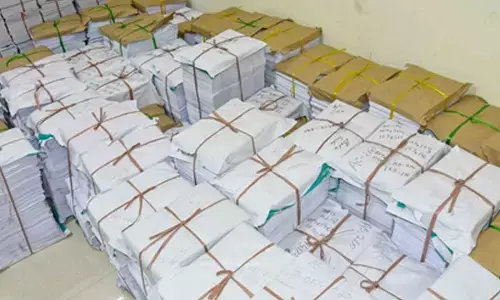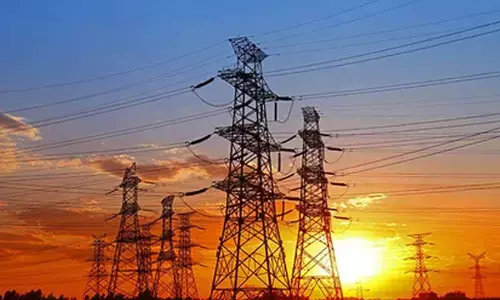Yagna will bring more prosperity to Bhagyanagar: Chinna Jeeyar

Sri Lakshmi Narayana Maha Yagna is under way at Muchintal on Thursday
The 216-foot statue of Ramanujacharya standing tall in a padmasana posture on Bhadravedi in Ramanagari of Muchintal on the outskirts of Hyderabad wore a festive atmosphere on Thursday.
Hyderabad: The 216-foot statue of Ramanujacharya standing tall in a padmasana posture on Bhadravedi in Ramanagari of Muchintal on the outskirts of Hyderabad wore a festive atmosphere on Thursday.
The Rutviks, Veda pandits, volunteers and devotees turned in their thousands on starting the Sri Lakshmi Narayana Maha Yagna on Thursday.
The programme started with the Suprabhatam followed by Aaradhana, Vishwaksena Puja, Punya-havachanam followed by Arani Manthan (churning of wood) to produce fire as prescribed in the Vaidic method of generating fire. This fire was later distributed to all the kundas in 114 separate thatched huts for Agni Prathistapana.
Addressing the gathering, Sri Tridandi Srimannarayana Chinna Jeeyar Swamy said that fire thus generated will remain alive till the end of the yagna on the 12th day. Besides, he said that there are three kinds of fire being invoked for the purpose of Yagna, namely, Bala Agni, Yuva Agni and Vrudha Agni.
Yuva Agni is invoked for conducting yagna to obtain fulfilment of an individual wish by people. The Vrudha Agni is invoked when conducting yagna during Brahmotsavams and at temples. The Bala Agni is invoked when a yagna is performed for the wellbeing of society, country and the world at large.
Against this backdrop, Bala Agni is invoked for conducting the Lakshminarayana Maha Yagna, he added.
He said that the Sahastra Kunda Maha Lakshmi Narayana Yagna will further make Bhagyanagar (Hyderabad) prosperous.
After the Arani Manthan, the priests made Veda Vinnapams, a recital of mantras from the nine branches of Vedas, Puranas, Itihasas, Prabandas and Sthothras indicating the beginning of the Paarayana.
Yajna is concluded with Purna Ahuthi with the last mantra assigned for that day being chanted, during the conclusion of the prayer to Agni Devatha. Vishwaksena Aradhana, the Sudarshana Ishti, and Vasudeva Ishti were recited.
The Dwajaarohana ritual was then done as part of the rituals observed in the day. Where the Garuda Pathaka (flag) was hoisted. The Garuda Pathaka signifies inviting all the Devatas for the yajna.








